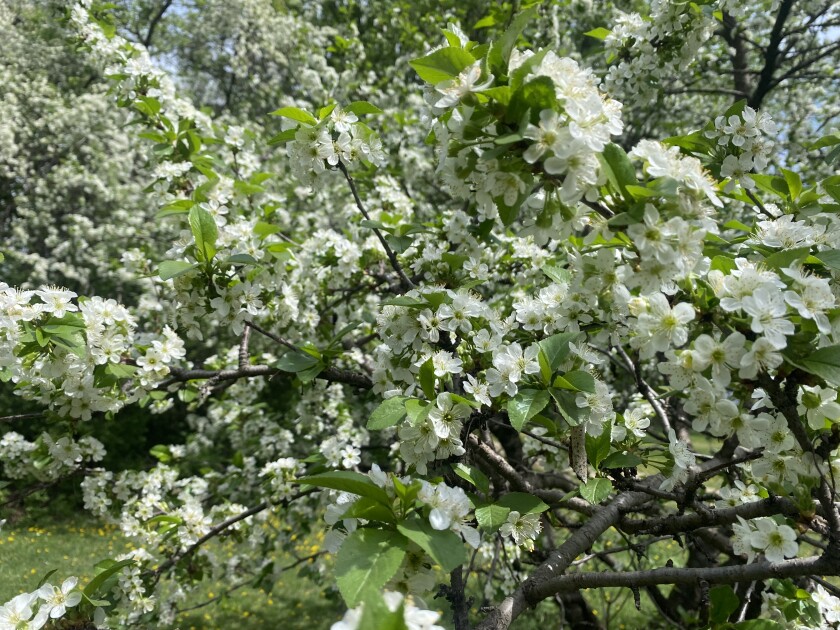Spring — or maybe it could even be called summer — sprung with lightning speed on our farm this year, propelled by unseasonably hot temperatures during the second week in May.
When I mowed for the first time on May 9, I noticed that nestled among the tiny leaves on the lilac bushes were clusters of blossoms about the size of my thumb.
ADVERTISEMENT
By May 15, after five consecutive days of high temperatures in the mid-to upper 90s, the lilacs were blooming. The bushes’ crabtree neighbor also was near full bloom, and across the yard, the plum and apple trees were heavy with blossoms.

Meanwhile, the green grass along the roadsides covered up the brown grass from last year, and grain and row crops were peaking up in early-planted fields. Our lawns, too, bolted during the week, and the seeds of our “cold season" garden crops of carrots, parsnips and lettuce had pushed through the soil.
But the northern Plains, after all, is the land of extremes, and after the week of extremely hot weather, a cold front came through and temperatures dropped like a rock, prompting the National Weather Service to issue frost warnings.
I was glad then that I had resisted the urge to go full-tilt into gardening.
My parents and grandparents, seasoned gardeners, always waited until Memorial Day to plant “warm season” crops like green and yellow wax beans, cucumbers and watermelon, and plants like tomatoes, bell peppers and flowers that were tender and could be killed by frost.
Sure, I could have saved them by covering them to protect them from the cold temperatures, but I prefer not to do extra work, and I think listening to the advice of my parents and grandparents who were farmers, besides being gardeners, is wise. That advice prevented me from having to do extra work not only this year but many others that had similar wild swings in temperatures.
I’ve found that life experience and paying attention to nature’s signals can be more reliable than sophisticated weather forecasts.
ADVERTISEMENT
On a hot, humid day, in the summer, for example, even if there are no thunderstorms forecast, I don’t plan to do outside work because it’s likely that the combination of the hot temperature and humidity will brew up a storm.
Similarly, in the winter, when the snow is falling so hard I can’t see the buildings across the farmyard, I don’t travel even though the forecast says the snow will end in X amount of time. The snow isn’t listening to the forecast predictions for amounts and times it will cease coming down.
I don’t know what the weather holds for the second half of this month, but whatever it is, I’ll follow the cues it’s giving me, not what the forecast says. If Memorial Day comes in the midst of a cold spell, I’ll hold off on planting the rest of the garden until the weather warms. I will wait, too, if the soil is wet because “mudding in” the garden crops works no better than doing that with field crops.
I am blessed to have lived on farms for most of my life where I’ve had the opportunity to listen to the advice of those who tilled the soil, hearken to the natural world, and to plant and harvest in the fields growing up and in the garden now.
That all makes it worth it, no matter the capriciousness of the weather in the northern Plains.
Ann Bailey lives on a farmstead near Larimore, North Dakota, that has been in her family since 1911. You can reach her at 218-779-8093 or anntbailey58@gmail.com.











